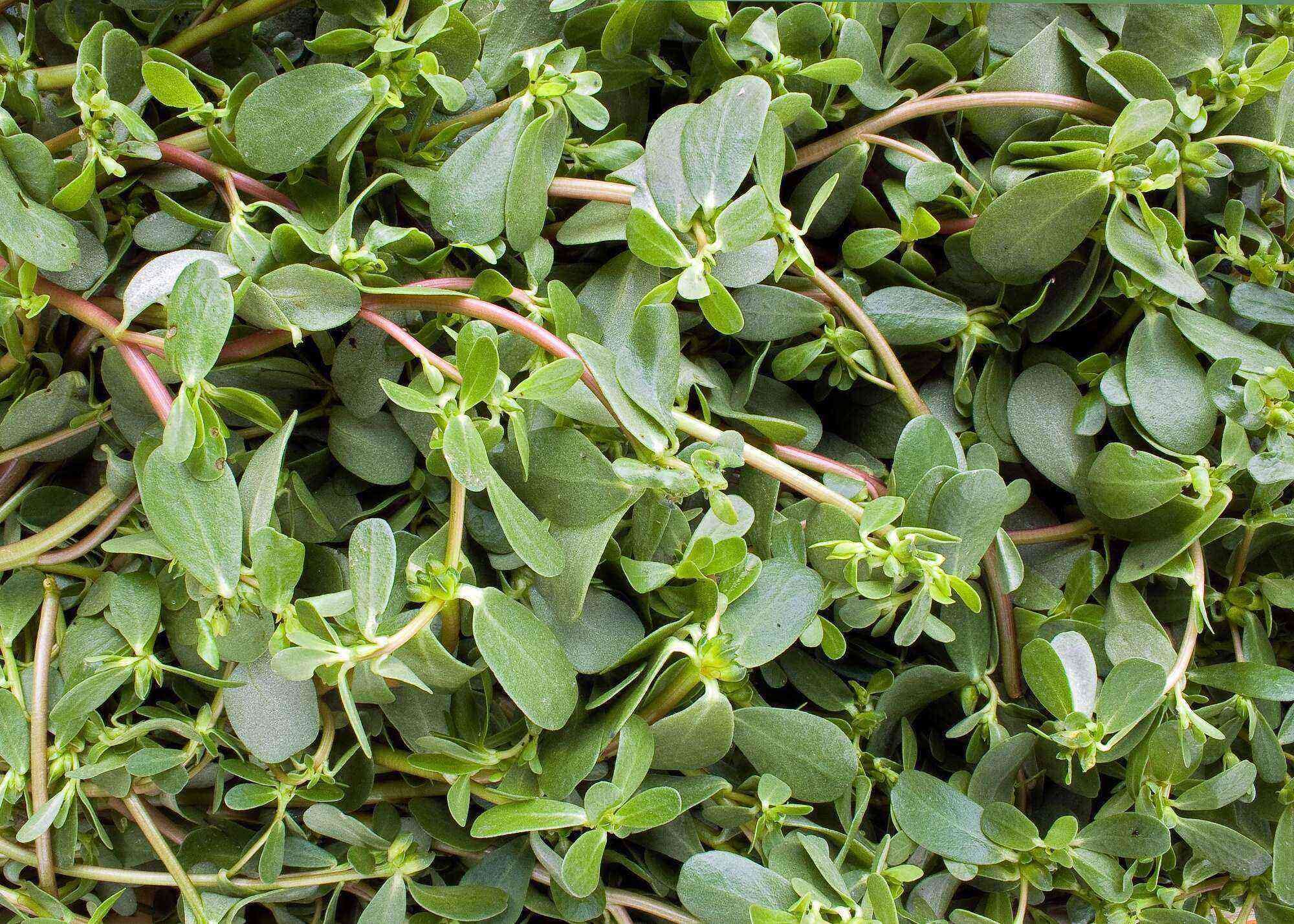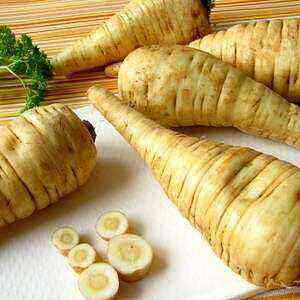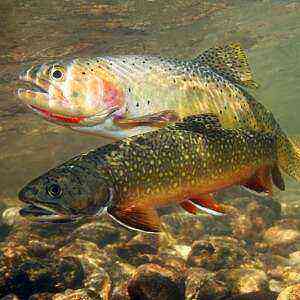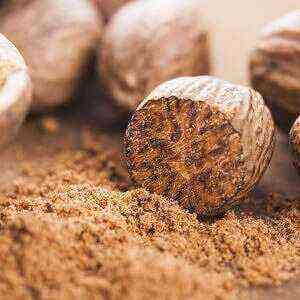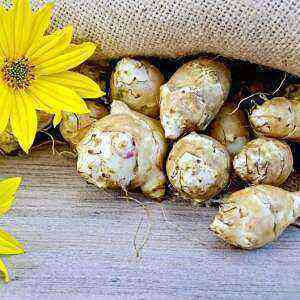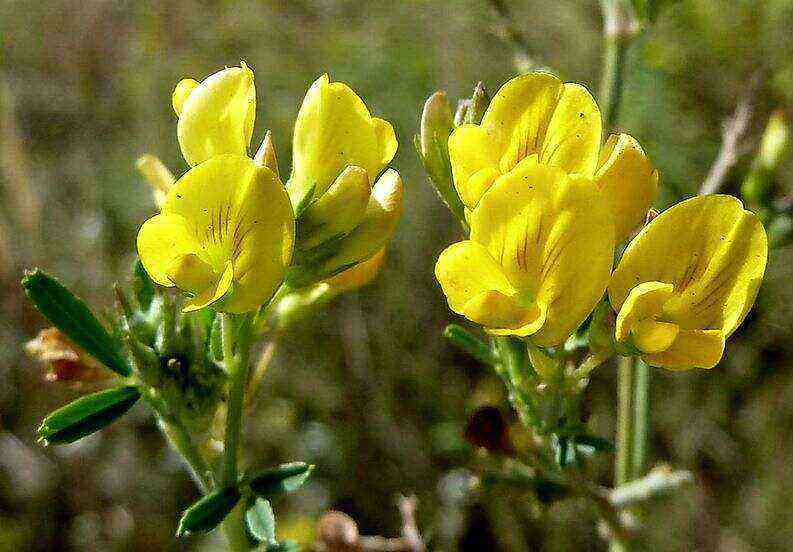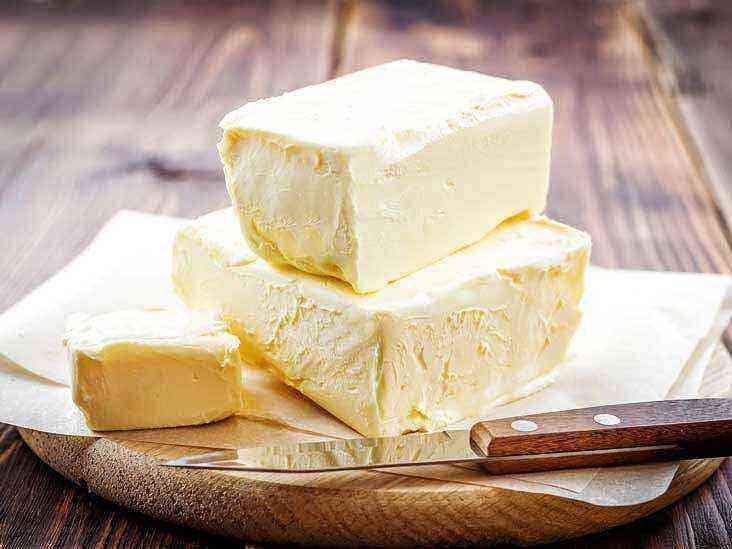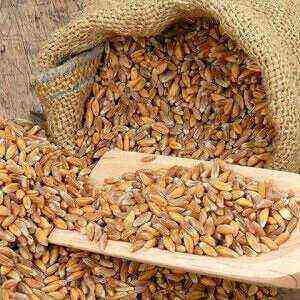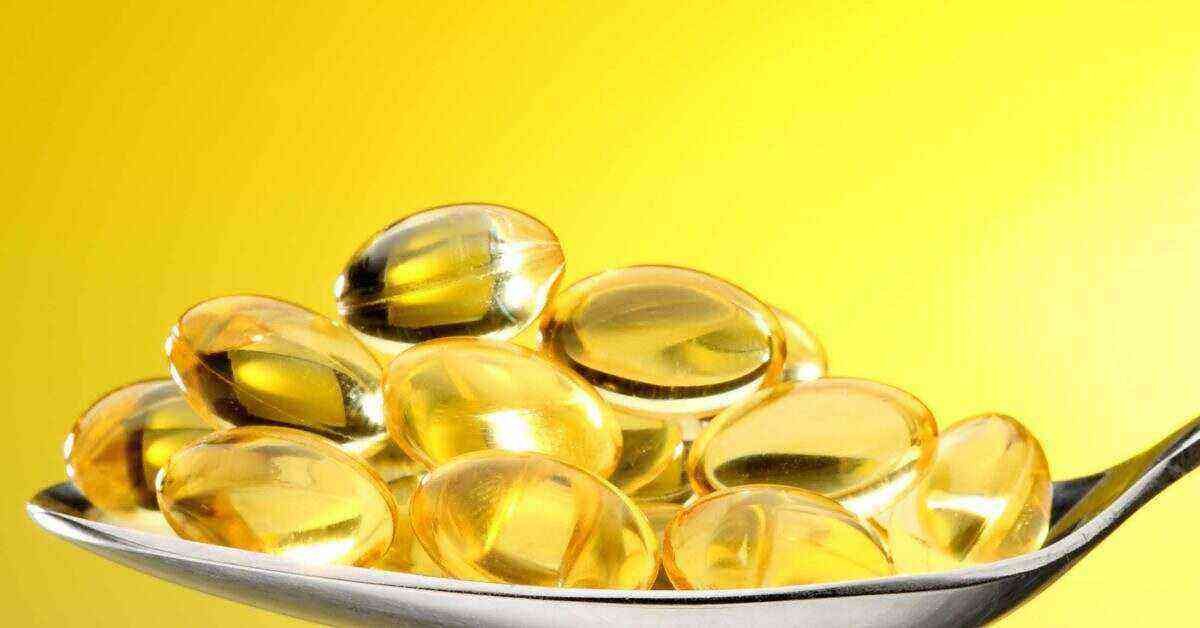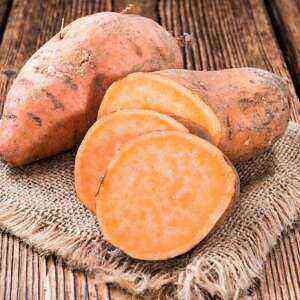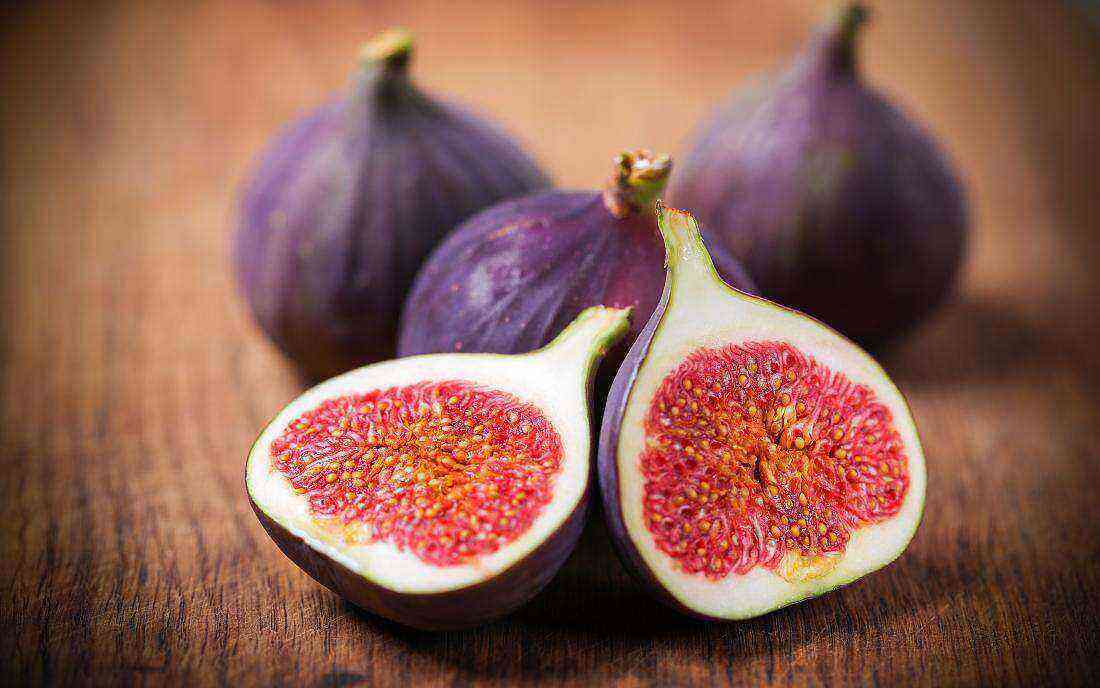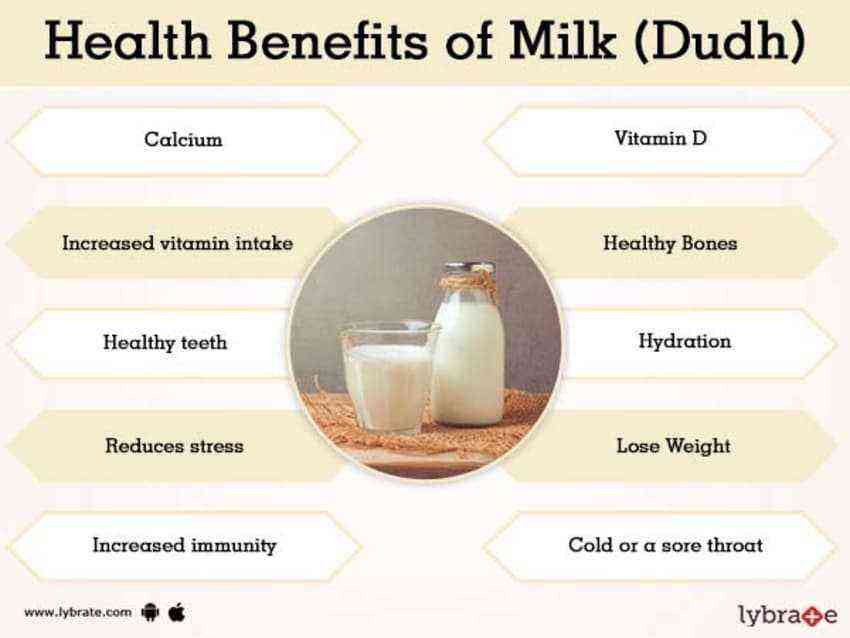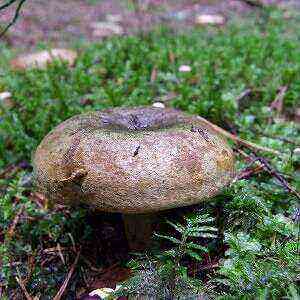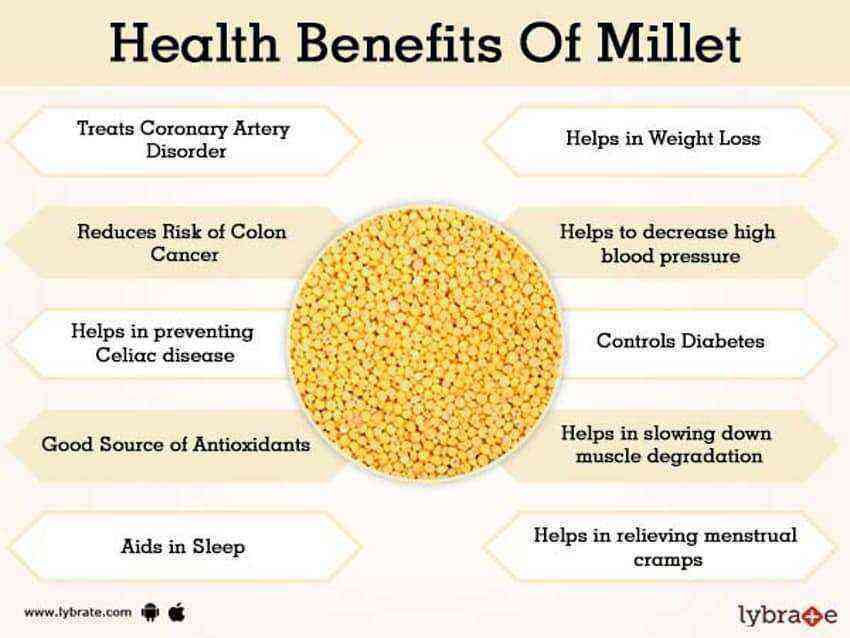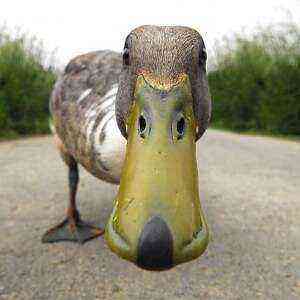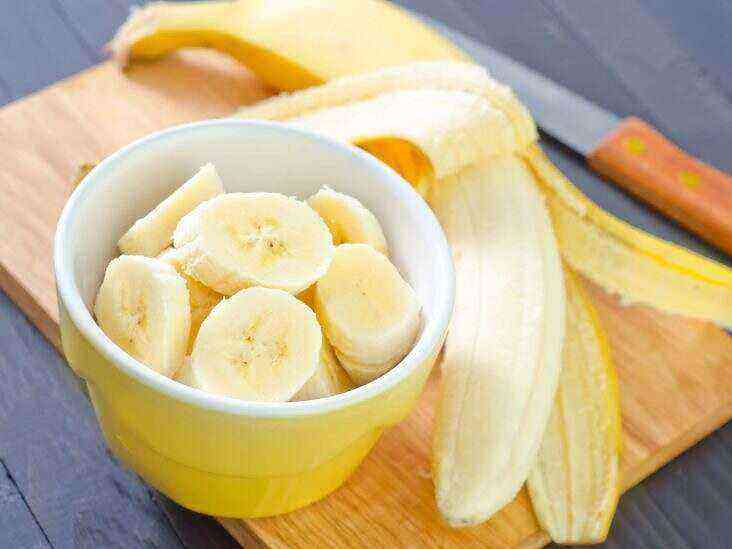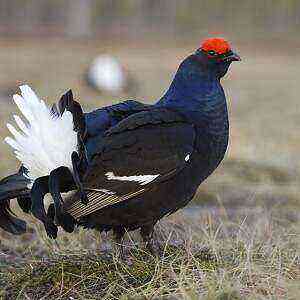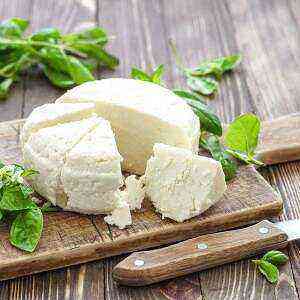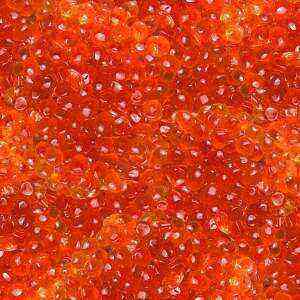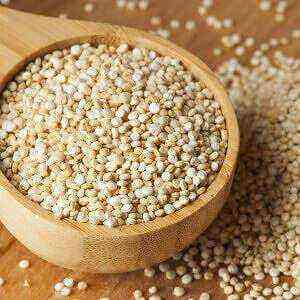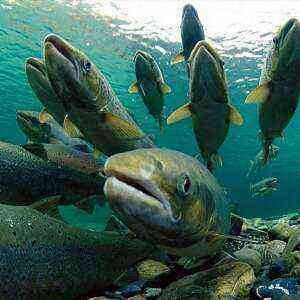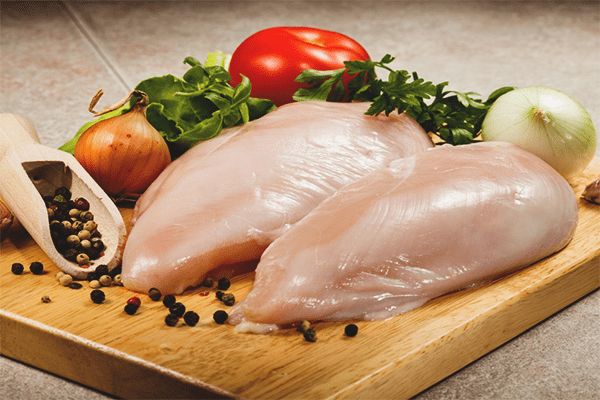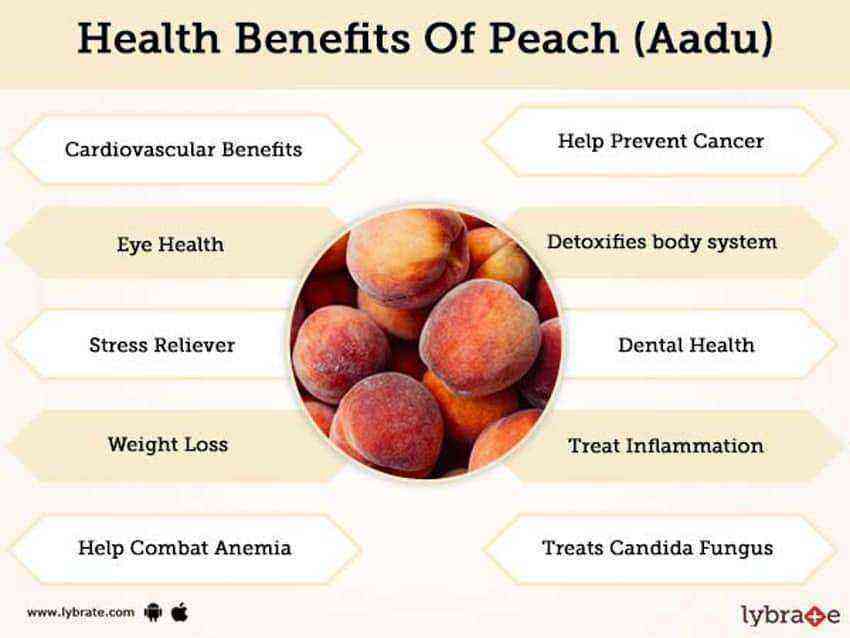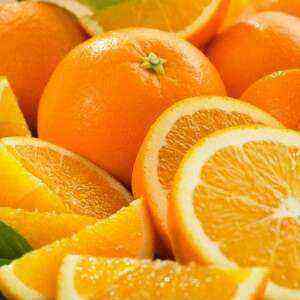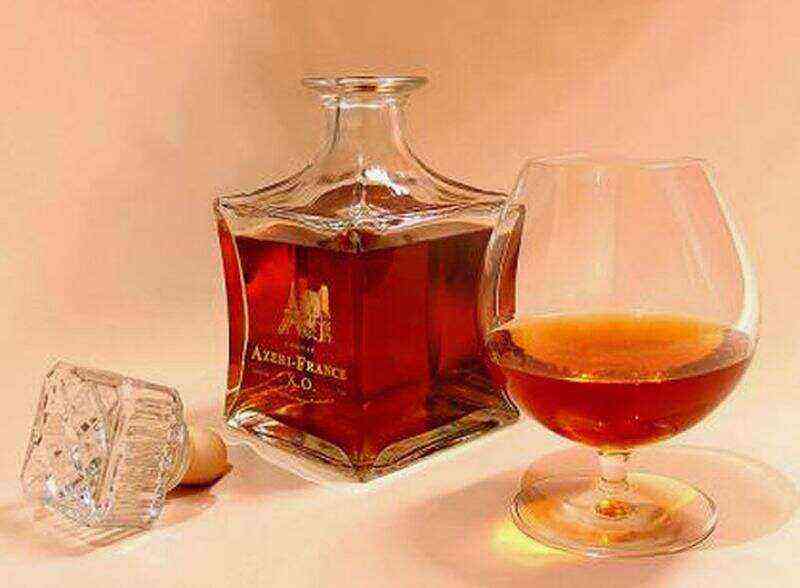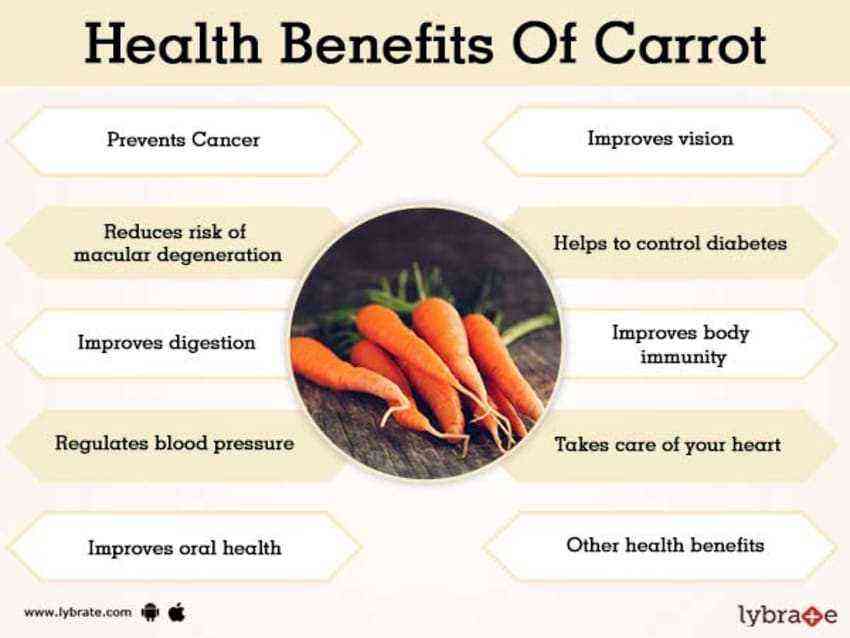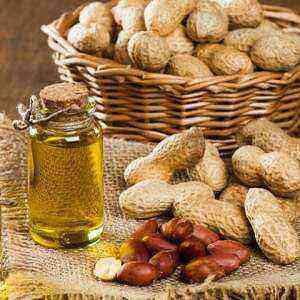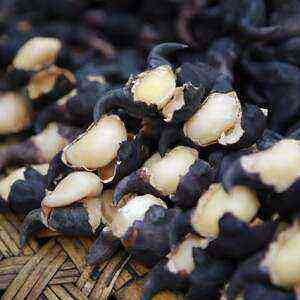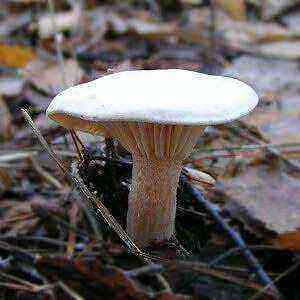
Due to their high taste and nutritional properties, peanuts are very popular in cooking.
Botanical description
Ivishen is a lamellar mushroom with a white cap of a yellowish cream shade. The diameter of the circumference of the fruiting body varies from 4 to 10 cm. The plates of the cherry tree are frequent, 2-3 mm thick, descending to a slightly curved cylindrical stalk. The upper part of the “trunk” is covered with a powdery coating, and the lower part is covered with yellowish pile. Young plants are characterized by a hemispherical cap with rolled edges and a small “fluff”. As the mycelium grows, the fruiting bodies level out, and the pile falls off.
In mature crops, the cap is always flat, irregular in shape with a depressed center (funnel-shaped). The flesh of cherries is tender, thin-fleshy with a characteristic mealy odor (the color of the core does not change when broken).
These crops are common in deciduous forests of the northern temperate zone (where oak and birch grow). In addition, they can be found in coniferous forests (in dense grass or on the edge), in meadows and home gardens (under fruit trees). The fruiting period of mushrooms begins in July and ends in October (with the first frost).
If the autumn is warm, the spore plant can inhabit woodland until mid-November. Interestingly, at the beginning of the season, cherry trees appear in large families, and then the density of their growth is reduced by three times.
Chemical composition
The nutritional value of the peanuts is primarily due to their chemical composition. At the same time, the biological properties of mushrooms directly depend on the type of soil, climate, meteorological conditions, the age of the plant, and the method of cultivation.
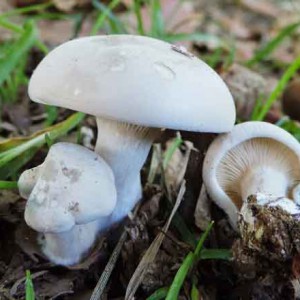
- Water. Freshly harvested cherries are 85-95% H2O (relative to the total weight of the fruiting body). However, during heat treatment, mushroom tissue loses about 45% of moisture, and when dried, up to 90%.
- Proteins. The anhydrous residue of cherries is 40-50% composed of nitrogenous compounds (depending on the stage of development and growing conditions). Moreover, there are much more of them in the head of the plant than in the leg (due to the presence of the hymenial layer that carries spores).
The share of protein structures accounts for 60-70% of the total amount of nitrogenous compounds (3-5% of the wet weight of the fungus). The remaining 30% include intermediate protein metabolites. Namely: amino acids (leucine, arginine, tyrosine, glutamine), fungin (mycetin), organic bases (adenine, xaitin, hypoxanthine), cellulose (chitin, cellulose), gaseous substances (carbon, oxygen, hydrogen).
Despite its rich nitrogenous composition, mushroom protein belongs to the group of difficult-to-digest compounds (due to the content of lignin, cellulose and chitin). In view of this, people with diseases of the digestive tract should limit the consumption of the product.
- Carbohydrates. Mushrooms, in terms of the quantitative and qualitative composition of saccharides, are close to vegetables. The concentration of carbohydrates in the fruiting bodies varies from 2 to 7% (depending on the growing conditions). A distinctive feature of mushrooms is the presence of unsaturated aldehydes (trans-2-nonenals) in their tissues, which give the plant a specific cucumber aroma. In addition, the composition of the fungal tissue includes glycogens, saccharides (glucose, trigalose), fiber, sugar alcohols (mannitol, inositol, volemite, sorbitol). In humid weather, these substances accumulate on the caps of the cherry, causing the outer surface of the fruiting body to become mucous.
- Lipids. 0,1-0,9% of fat is concentrated in the tissues of the mushroom (relative to the total weight of the mushroom). At the same time, 80% of the compounds are concentrated in the plant head (in the spore-bearing layer). The main representatives of “mushroom” lipids are free fatty acids (acetic, palmitic, butyric, stearic), provitamin D (ergosterol), lecithin (inositol, choline). In addition, fatty acid glycerides, essential oils, lipoids, and phosphatides are part of the fruit bodies of cherry.
- Minerals. Micro- and macroelements make up 6-11% of the solid residue of anhydrous weight (ash). Potassium accounts for 43% of the total mineral composition, phosphorus – 40%, sulfur – 7%, cobalt – 3%, magnesium – 2%, calcium – 1,3%, iron – 1%.
- Vitamins. In terms of nutrient content, cherry is equated to berries and fruits. The fruit body of the fungus contains vitamins B1, B2, A, B3, C, D.
Ivishen, due to its low energy value (38 kilocalories per 100 grams of mushroom mass), is included in dietary programs for weight loss. In addition, the extract from the plant is used in folk medicine, as an anticoagulant, fortifying, antianimic, antithrombotic agent.
Caution – danger!
It is important to be extremely careful when collecting hanging plants, since the plant bears similarities to poisonous mushrooms.
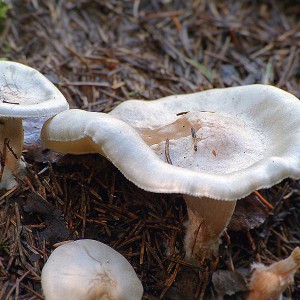
- Waxy talker. A distinctive feature of the plant is the presence of pale pink watery concentric rings on the cap (the older the plant, the more intense the shade). It is easy to confuse ivishen with a young talker, since the fruiting bodies of immature “doubles” have a subtle gray color.
- Poisonous rose-leaf. This mushroom differs from willow in a larger cap size (diameter 7 – 16 centimeters) and a bare leg.
- Seroplate is bitter. In mature inedible mushrooms, concentric cracks are present on the cap. However, in young seroplasts, lesions on the fruiting body are only outlined.
Remember, in some cases it is possible to distinguish young cherry trees from poisonous “brothers” only in laboratory conditions. In view of this, it is better for inexperienced mushroom pickers to refuse to collect this product.
Artificially grown willow
Currently, in addition to natural growing conditions, ivy is cultivated artificially. The trade name for such crops is oyster mushrooms. Spore plants are bred in two ways: extensive and intensive. In the first technology, conditions are used that are as close as possible to natural (in the open field). The second technique involves the use of optimized bulk substrates and the creation of special climatic zones (indoors).
Extensive method
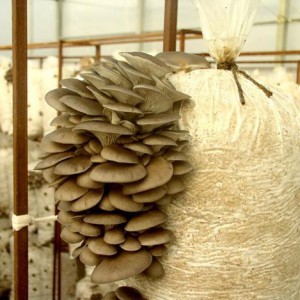
Algorithm for cultivating the mushroom in an extensive way:
- Choose a place to germinate cherries. The main requirement for a land plot is protection from direct sunlight.
- Pick up wood (cherries, plums, apricots, larch, birch, poplar, aspen). When choosing a “building material”, preference is given to healthy logs that are not affected by mold. The optimal length of the bar is 30-50 cm, the diameter is 15 cm. If the wood is dry, it must be soaked in water (3-4 days).
- Prepare the logs for mushroom spores. To do this, 20 holes with a diameter of 10 mm and a depth of 6 cm are drilled in wooden blocks (staggered).
- Insert sticks with myceleum into the holes until they stop. After inoculation, the cuts are covered with garden film or oilcloth. During the introduction of the mycelium, make sure that dust and debris do not get into the wood.
If these rules are observed, fruiting occurs in 12-15 months.
The advantages of extensive technology are low material costs, availability of raw materials, ease of maintenance. However, in simple home conditions, it is almost impossible to regulate the growth of mycelium (since the quantity and quality of the crop directly depend on meteorological factors).
Intensive growing method
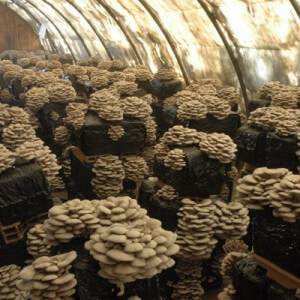
- Prepare a nutrient substrate. Waste from agriculture can be used as compost: sunflower husk, cereal straw, corn cobs, buckwheat husks, sawdust of deciduous trees. The base for the substrate is crushed and then poured with hot water (75-80 degrees). After that, the compost is simmered in a water bath for 1,5-2 hours (to destroy harmful microorganisms). After processing, the water is drained, and the disinfected mixture is cooled to a temperature of 27 degrees.
Remember, the finished compost should not be too dry or too wet.
- Mix the disinfected fertilizer with grain mycelium (spores). The optimal consumption of mycelium is 2-5% of the wet weight of the substrate. It is important to carry out this procedure in a dry, clean room (to avoid mold entering the compost).
- Arrange the substrate with mycelium in polypropylene bags. Hang the blocks upright.
- Provide an optimal indoor climate. During the period of spore germination, the temperature in the room should fluctuate within 24-26 degrees (maximum – 30 degrees), and humidity 80-85% (not more than 95%). With a decrease in these indicators (to the minimum mark), the fruit bodies dry out, and with an increase (above the norm), the substrate becomes rotten and the mycelium becomes infected.
- Reduce the temperature to 12-18 degrees after germination of mycelium hyphae (after 2-3 weeks). Along with this, during the ripening period of the mushrooms, good ventilation is provided in the room (to remove carbon dioxide).
The advantages of the intensive method are a short development cycle of fungi (3,5-4 months), high yield rates, resistance to bacterial infections. The main disadvantages of the technology are large material and labor costs (due to the need to create special climatic zones).
Benefit and harm
What is the purpose of using cherry?

Mushrooms are used in folk medicine to treat nervous disorders, digestive problems, and heart pathologies.
Contraindications to use: allergies, diseases of the digestive tract.
Cooking application
Hangers go well with meat, game, cereals and vegetables. They are usually used for baking, frying and drying. This mushroom is not suitable for pickling and salting (due to the delicate structure of the fruit bodies). For cooking, use young medium-sized cherries. The flesh of old fruiting bodies is tough and tasteless.

- Soak the pendants for 15 minutes in cold water.
- Remove debris and gluten from the product.
- Place the mushrooms in a container with cold water, add salt (at the rate of 5 g of seasoning per liter of liquid), leave for 2 hours.
- Drain the salty liquid, rinse the fruits under running water (to remove the mealy taste).
- Pour the filtered liquid over the mushrooms, place on fire.
- Cook over low heat for 20 minutes.
In cooking, along with whole cherries, mushroom powder (prepared from dried fruit bodies) is widely used. This spice gives the dish an exquisite mushroom aroma with pronounced notes of sweetness. In addition, the seasoning is used as a substitute for salt and flavoring oils, vinegars, sauces, liqueurs, mayonnaise.
Useful recipes
Hanging mushroom sauce

- fresh cherries – 400 g;
- onion – 80 g;
- butter – 60 g;
- flour – 30 g;
- cream (33%) or homemade sour cream – 150 g;
- salt – 5 of
Method of preparation:
- Soak the mushrooms in two changes of water, boil until half cooked (10 minutes), cut into cubes (1-2 cm thick).
- Place the boiled product in a dry frying pan, place on fire for 10 minutes (to evaporate excess water).
- Add chopped onion and salt to the mushrooms. Saute the raw materials over low heat until tender (15-20 minutes).
- Combine the golden mass with sour cream and flour. Simmer the mixture for 10 minutes, stirring constantly.
Serve the finished sauce chilled along with a meat or vegetable side dish.
Summer salad
Components:
- fresh willows – 400 g;
- tomatoes – 200 g;
- onion – 100 g;
- store sour cream – 100 ml;
- salt – 3 g;
- pepper, seasonings – to taste.

- Boil the mushrooms in salted water (5 minutes), dispose of the waste liquid.
- Pour the hangings with fresh water, place on low heat.
- Bring the mushrooms to readiness (15-20 minutes).
- Grind the components of the salad: mushrooms in narrow slices, tomatoes and onions into small cubes (0,5 cm).
- Combine chopped ingredients, add spices.
- Pour store sour cream over the salad.
If desired, the dish can be decorated with a sprig of parsley.
Mushroom salad with ham
Ingredients:
- oyster mushrooms – 300 g;
- cucumbers (fresh or salted) – 200 g;
- ham – 150 g;
- sour cream – 70 ml.
Preparation:
- Boil the mushrooms in two changes of water (the duration of the first is 5 minutes, the second is 20 minutes).
- Cut one third of the cooled mushrooms into very small cubes, and the rest into strips.
- Chop cucumbers and ham into strips.
- Combine the chopped ingredients, add sour cream.
For decoration, you can use pomegranate berries and herbs (optional).
Hanging noodles

- mushrooms – 300 g;
- vermicelli – 200 g;
- fish – 100 g;
- flour – 15 g;
- butter – 30 g;
- meat broth – 40 ml.
Algorithm of creation:
- Boil mushrooms until half cooked (10 minutes).
- Cut the cherries and ham into strips.
- Fry the mushroom mixture in butter for 10-15 minutes.
- Boil the noodles, put them in a colander.
- Combine mushroom frying with pasta, flour, salt, seasonings, meat broth.
- Simmer the mixture over low heat for 10 minutes.
Serve this dish with tomato juice and sour cream.
Omelet with oyster mushrooms
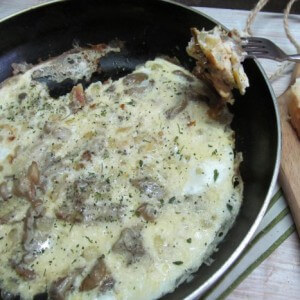
- eggs – 2 pieces;
- butter – 40 g;
- oyster mushrooms – 300 g;
- cheese – 50 g;
- onion – 100 g;
- butter – 40 g;
- salt – 2 of
Method of preparation: before creating an omelet, the mushrooms are boiled for 5-7 minutes over low heat. Then the raw material is cut into small slices and fried until golden brown. After that, chopped onions, eggs and cheese are added to the mushroom mixture. The omelet is simmered over the fire for 5 to 10 minutes.
Conclusion
Ivishen is a lamellar edible mushroom characterized by a strong cucumber odor. This culture grows in deciduous forests and orchards (mainly near trees). Under natural conditions, the hanging plant bears fruit from July to October, and under artificial conditions, all year round. This mushroom has high taste properties, which is why it is actively used in cooking. In addition, a large number of phosphorus and potassium compounds are concentrated in the caps of cherries (which determines their usefulness for the digestive, hematopoietic and musculoskeletal systems).
To prevent the noble mushrooms from becoming fatal, it is necessary to collect plants only in ecologically clean areas (away from roads and industrial production). Moreover, for the cut, it is important to choose young fruiting bodies that have not had time to accumulate toxic compounds.
When collecting cherries, carefully examine the structure of the mushroom (plates, cap, stem). This will help to avoid getting into the basket of poisonous “doubles”.



